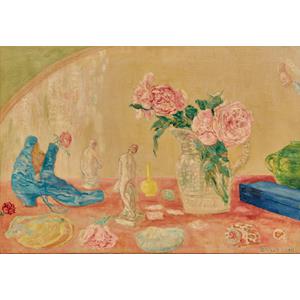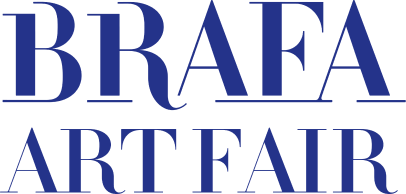DÉTAILS DE L'IMAGE

Van Herck-Eykelberg
James Ensor (Ostend, 1860-1949)
Roses, tanagras and boot, 1917
Oil on canvas
46.5 x 66 cm
Signed and dated lower right
Literature: G. Le Roy, James Ensor, G. Van Oest, Bruxelles/Paris 1922, p. 195; F. C. Legrand, Ensor cet inconnu, La Renaissance du Livre, Bruxelles 1971, n° 238; X. Tricot, James Ensor, Catalogue raisonné of the paintings. II, 1902-1941, Wienand, 1992 Anvers, n° 484; X. Tricot, James Ensor, Catalogue Raisonné of the paintings. Mercator, 2009, n° 495
Exhibition: XV Exposizione Internationale d’Arte della Cittá di Venezia (Venice Biennale), 1926; Partially legible label on the back: ‘XIVieme Exposition Internationale des Beaux-Arts’
About a third of James Ensor's oeuvre consists of still lifes. Ensor often used objects from his studio for his still lifes, most famously the masks sold in his parents' souvenir shop in Ostend, but just as regularly he used shells, flowers or ancient Greek Tanagra figurines in his compositions. More exceptionally, Ensor introduces an iconographic element that is both innovative and alienating. This is the case in the 1917 painting 'Roses, Tanagras and Boot' where a distorted blue boot is depicted, with androgynous character and a rose playfully contained within it. In the top right corner, there is a figure hovering over the scene, sticking out its tongue. It is a nod to us, the viewer - we become involved and watch the same theatre piece that is the still life with the various elements carefully arranged and providing the colourite of the composition. Both elements - the boot with the rose and the figure with outstretched tongue - make 'Roses, Tanagras and Boot' an exceptional work. The painting gives us a glimpse into Ensor's mind, a look inside the artist's head with characteristic humour and playfulness.
The painting stayed in a private collection for several decades and has only recently resurfaced for the first time. A label on the back indicates that this work was the 'natura morta' shown at the Venice Biennale in 1926 which was previously unknown.



 TÉLÉCHARGER L'IMAGE
TÉLÉCHARGER L'IMAGE